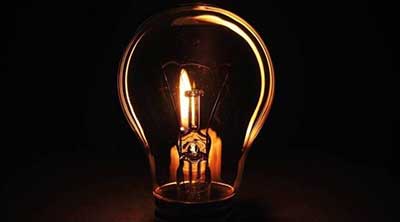Date: 23/03/2023
Relevance: GS-3: Infrastructure: Energy, Ports, Roads, Airports, Railways etc.
Key Phrases: Renewable Energy, Electricity Grid, Energy Transition, Carbon Emissions, Transmission, Infrastructure, Electricity Act, Power Purchase Agreements, Lithium, Thermal Power Plants, Supercritical Coal-Based Plants.
Context:
- The Indian electricity grid is preparing for a challenging summer
as it anticipates a surge of over 8% in peak demand, reaching 230 GW (gigawatts)
this year.
- System operators are preparing for an estimated 18 "alert days" in April when a significant power shortage could be a possibility, as projected by the National Load Despatch Centre (NLDC).
Key Highlights:
- India has been facing challenges in its power grid system in
recent years, which are expected to worsen this summer due to a surge in
demand.
- The country's power supply has traditionally relied on old, inflexible coal-fired plants for base load capacity, but a shortage of both coal and gas, which fuel thermal capacity, has thrown up several challenges.
- Additionally, a reliance on renewable energy sources for meeting capacity addition targets over the past decade or so has further complicated matters, as renewable energy is not always available during peak demand hours.
Steps Initiated To Tide Over The Surge:
- To tide over the surge in demand this summer, several steps have been
initiated by the government.
- Deferral of preventive maintenance: The preventive
maintenance schedule of conventional thermal plants during the
April-June period has been deferred for three months.
- This move is expected to ensure that the plants operate at maximum capacity during this period.
- Orders under Section 11 of the Electricity Act: Orders have
been issued to developers of imported coal-fired plants to operate units
at full capacity from March 16 to June 30.
- State distribution companies that have PPAs (power purchase agreements) with these plants have been accorded the first right of refusal for the generated electricity.
- Operationalisation of gas-based generation: Orders have been
issued to operationalise around 5,000 MW of gas-based generation of
state-owned NTPC Ltd.
- The generated electricity from these stations is to be sold to the PPA holders, while the balance generation is to be offloaded by the country's largest power producer in the electricity market.
- Water conservation measures: In the southern region,
reservoir levels are lower than normal, and hydro generation is likely
to be below expected levels.
- Utilities in the south have been asked to conserve water and use it to produce electricity in the evening hours in April.
- Advisories on coal blending: An advisory has been issued to ensure a 6% blending of imported coal in conventional thermal plants to tide over any possible shortage of domestic supplies.
- Deferral of preventive maintenance: The preventive
maintenance schedule of conventional thermal plants during the
April-June period has been deferred for three months.
Despite Measures, Challenges Remain:
- Obsolete Coal-Based Plants: India’s vast fleet of coal-fired
thermal power plants of 200 MW series is more than 25 years old, runs on old
technology and does not promise robust reliability.
- There is a compelling need to replace obsolete coal-based plants with supercritical coal-based plants that offer operational flexibility as an intermediate goal for total transition.
- However, this may not be acceptable to the international community in view of the impending climate crisis.
- Renewable Energy Targets: Renewable energy targets are now
getting stuck, with solar projects coming up at a comparatively slower rate.
The grid is critically dependent on the coal-based fleet of 30- to
35-year-old power plants.
- The addition of RE power is becoming a challenge to secure grid operation in the absence of energy storage devices. RE is not a dependable source of power without storage.
- The country’s old thermal plants are not capable of providing reliable reserve power during an emergency, and reserve shaft power or spinning reserves for automatic frequency response, which is now proving to be essential.
- Shortage of Lithium: The viability grant for 4,000 MW of
lithium-ion battery storage has been proposed in this year's Budget.
- However, the shortage of lithium is a key hurdle, and there are no viable alternatives other than lithium for large-scale storage at this point in time.
- Off-stream pumped storage is the only viable alternative for energy storage, but site selection and due diligence for these projects take time.
- Lack of Demand Projection: The biggest overarching reason for the
power shortage in India is the lack of clear demand projection.
- Despite the country's load demand being far from saturated, various players involved in the supply chain business have noted this lack.
- Thus, power demand cannot be met despite the country's installed capacity of 410 GW.
Conclusion:
- The Indian power sector is facing a major crisis with a shortage of electricity supply during the summer season. The steps taken by the government may tide over the situation for the time being.
- It is high time to address the larger problem of obsolete coal-based plants and the need to transition to sustainable energy sources. A cogent demand projection that takes into account the growing needs of the country is also necessary.
- The government needs to expedite the process of moving towards a sustainable energy model, which is possible by encouraging greater investment in renewable energy and introducing newer technologies
Source: The Indian Express
Mains Question:
Q. What are the key challenges facing the Indian power sector, and what steps can the government take to address them? (150 words).







